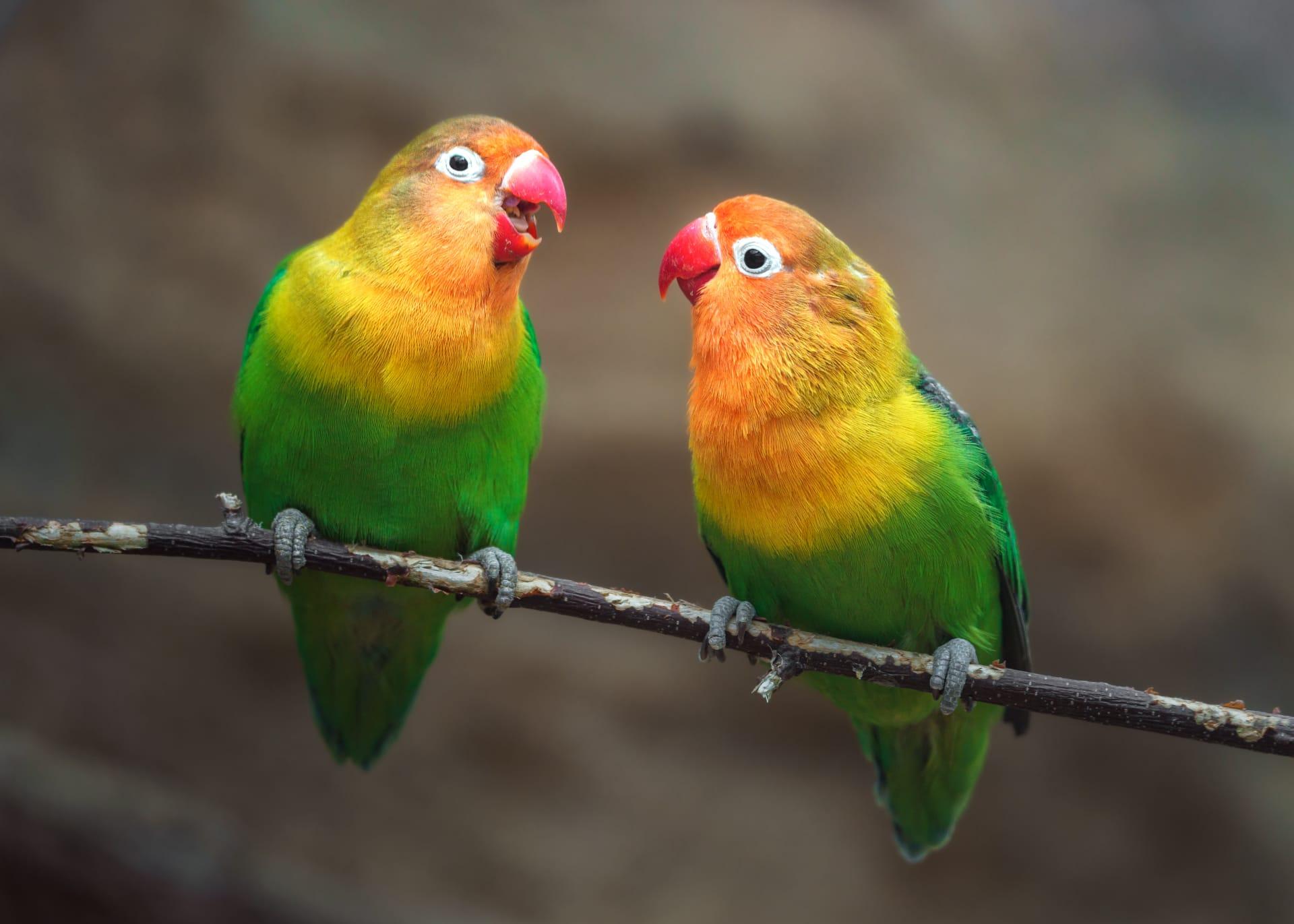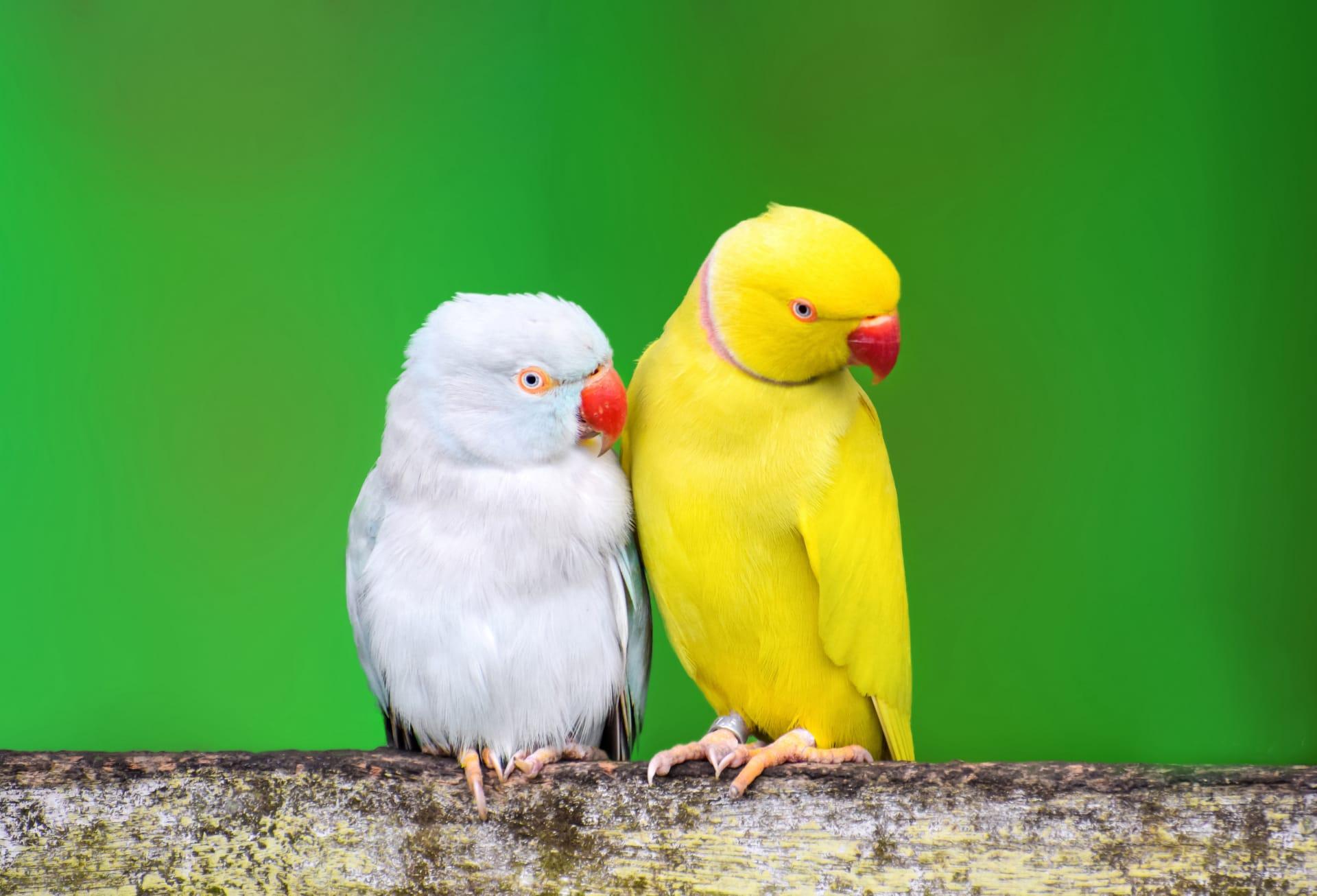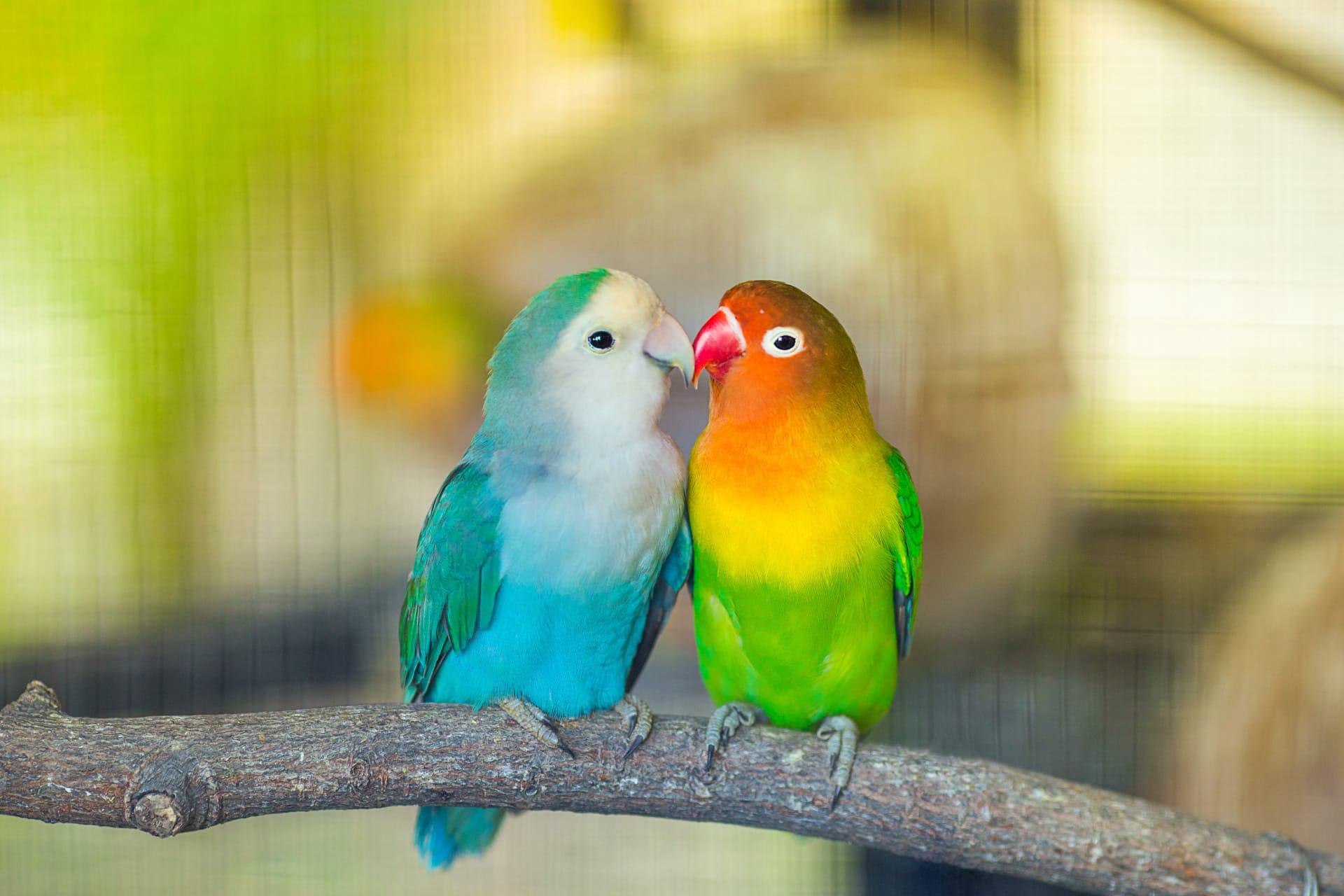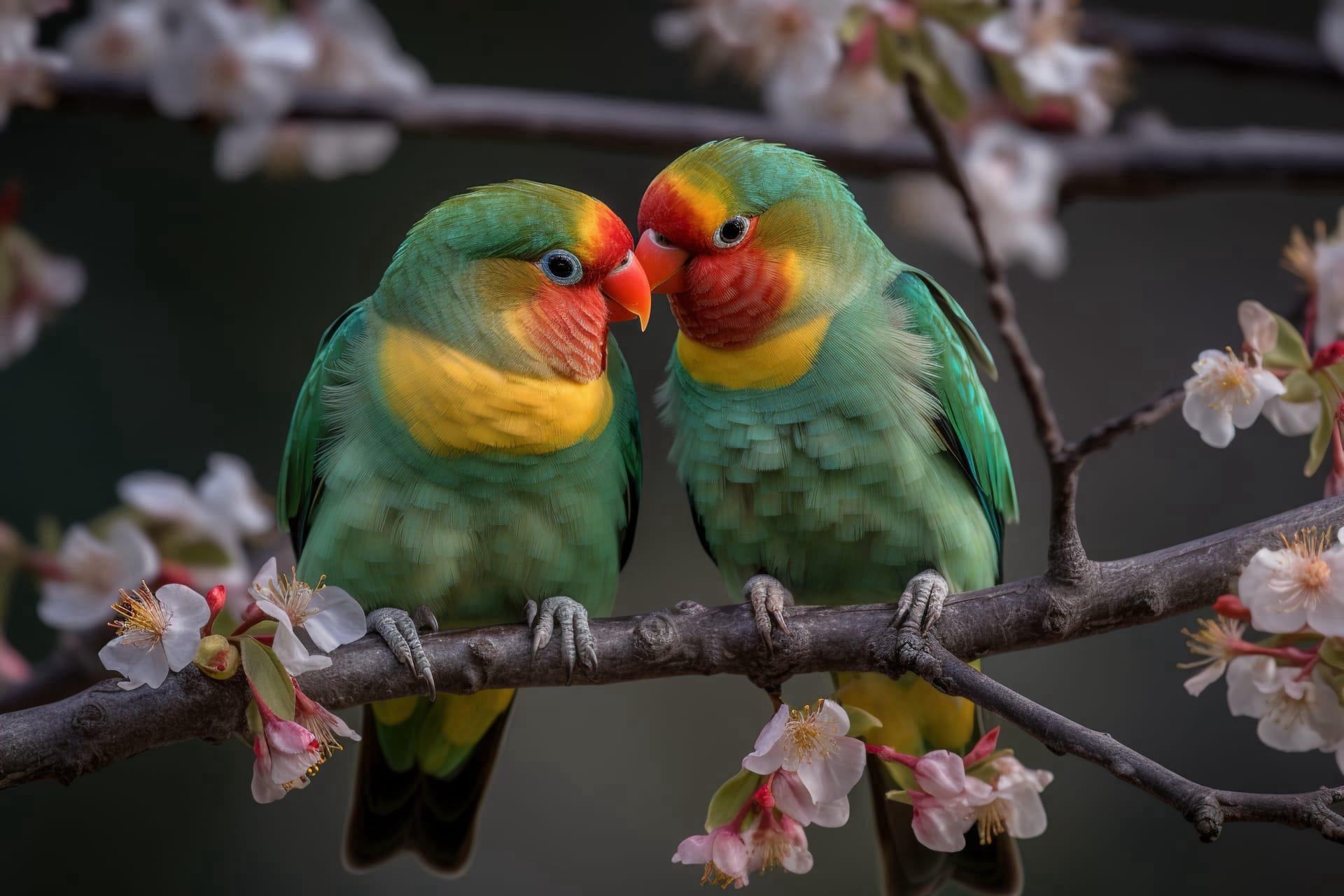1
Lovebirds are small, vibrant parrots, measuring just about 5 to 7 inches (13 to 18 cm) in length. They're known for their bright plumage, which can come in a variety of colors, including green, yellow, and blue. What sets them apart is their strong pair bonds. These birds are monogamous and form deep, lifelong relationships with their partners, often seen sitting closely together, preening each other's feathers.
These affectionate birds have a lifespan of 10 to 15 years in captivity, and their social nature demands interaction. In the wild, lovebirds live in small flocks, but in captivity, if they don't have a mate, they require significant interaction with their human owners to remain happy and healthy. Their need for companionship is so high that if they feel neglected, they can exhibit signs of depression or behavioral issues.

2
Lovebirds are native to the forests and savannas of Sub-Saharan Africa and Madagascar. In the wild, these birds are excellent flyers, capable of rapid, agile maneuvers. Their wingspan, despite their small size, can be up to 8 inches (20 cm) across. This adaptation is crucial for escaping predators and navigating through dense foliage.
Interestingly, lovebirds are also known for their vocal abilities. They are not as proficient in mimicking human speech as some other parrot species, but they communicate through a range of chirps, squeaks, and grunts. These vocalizations play a key role in social interactions, alerting others to food sources, danger, or their readiness to mate.

3
One unique behavior of lovebirds is their fondness for nesting. They exhibit an intriguing habit of tucking bits of paper, leaves, or other nesting materials in their feathers to carry back to their nests. Female lovebirds are particularly known for this, often seen with materials protruding from the feathers on their back as they fly.
Lovebirds also show a high level of intelligence and can be trained to perform various tricks and tasks. They are capable of understanding simple commands and can learn to navigate complex mazes or puzzles. This cognitive ability, combined with their social nature, makes them highly interactive and entertaining pets.

4
Diet is a crucial aspect of lovebird care. In the wild, their diet primarily consists of fruits, vegetables, and grains. In captivity, they require a balanced diet including pellets, fresh fruits, and vegetables to ensure they get all the necessary nutrients. Feeding them a variety of foods not only keeps them healthy but also provides mental stimulation, as they enjoy foraging and exploring new tastes.
Another interesting fact about lovebirds is their breeding behavior. They are known to lay clutches of 3 to 6 eggs, which hatch after an incubation period of about 23 days. The female takes the lead in incubation, while the male lovebird often feeds and takes care of her. This cooperative breeding behavior strengthens their bond and is a key part of their social structure.

5
When it comes to color variations, lovebirds boast a wide range. The most common species, the Peach-faced Lovebird, can be found in over 40 different color mutations. These range from the typical green with a pink face to rare blue, albino, and lutino (yellow) varieties. This diversity in colors is a result of selective breeding in captivity.
Last but not least, lovebirds have a strong territorial instinct, which can sometimes lead to aggressive behavior, especially during breeding season. They are known to defend their space fiercely against intruders. This territorial nature means that introducing new birds into an existing flock, or even a new toy into their cage, should be done with care to avoid stress or conflict.